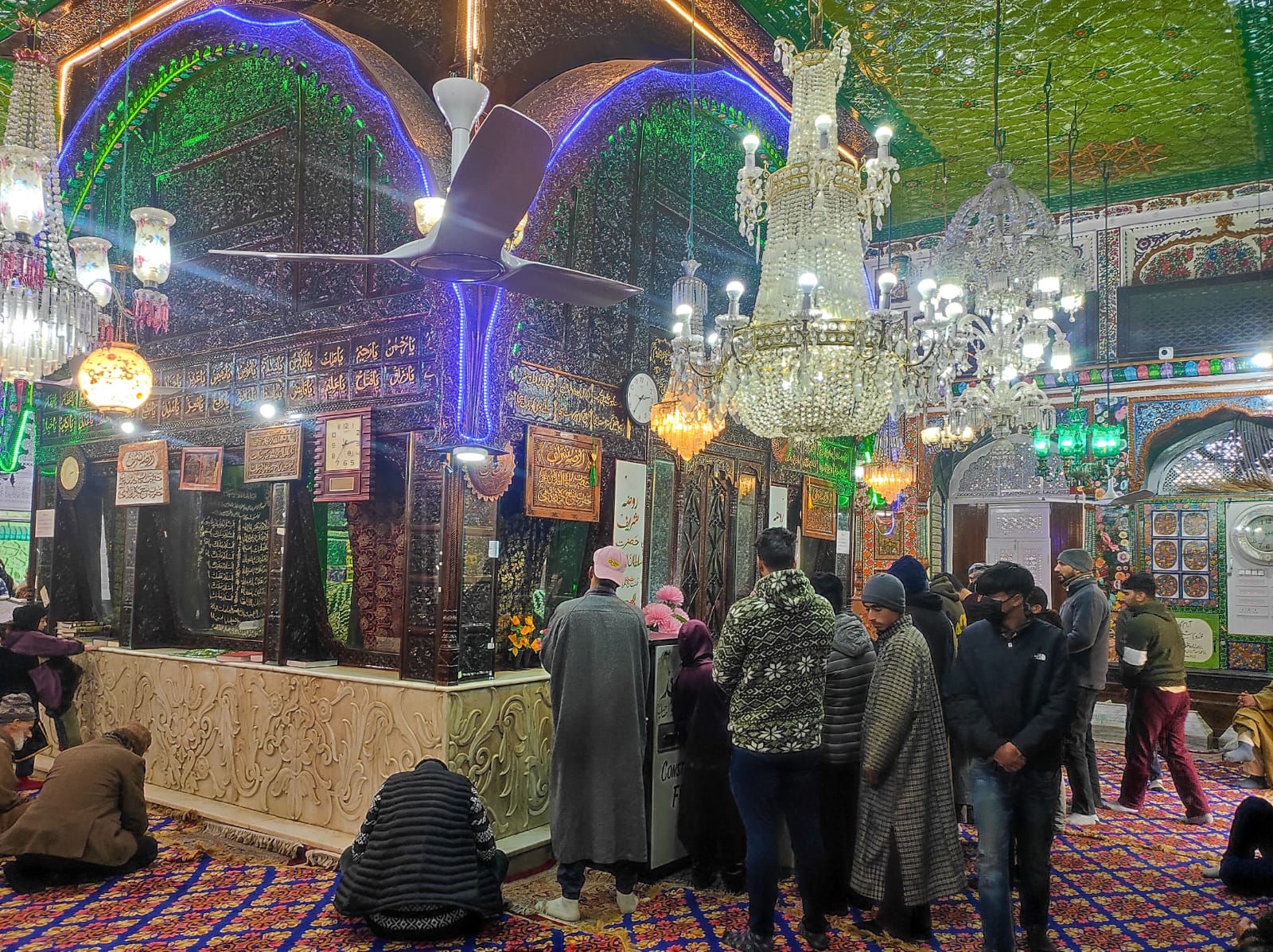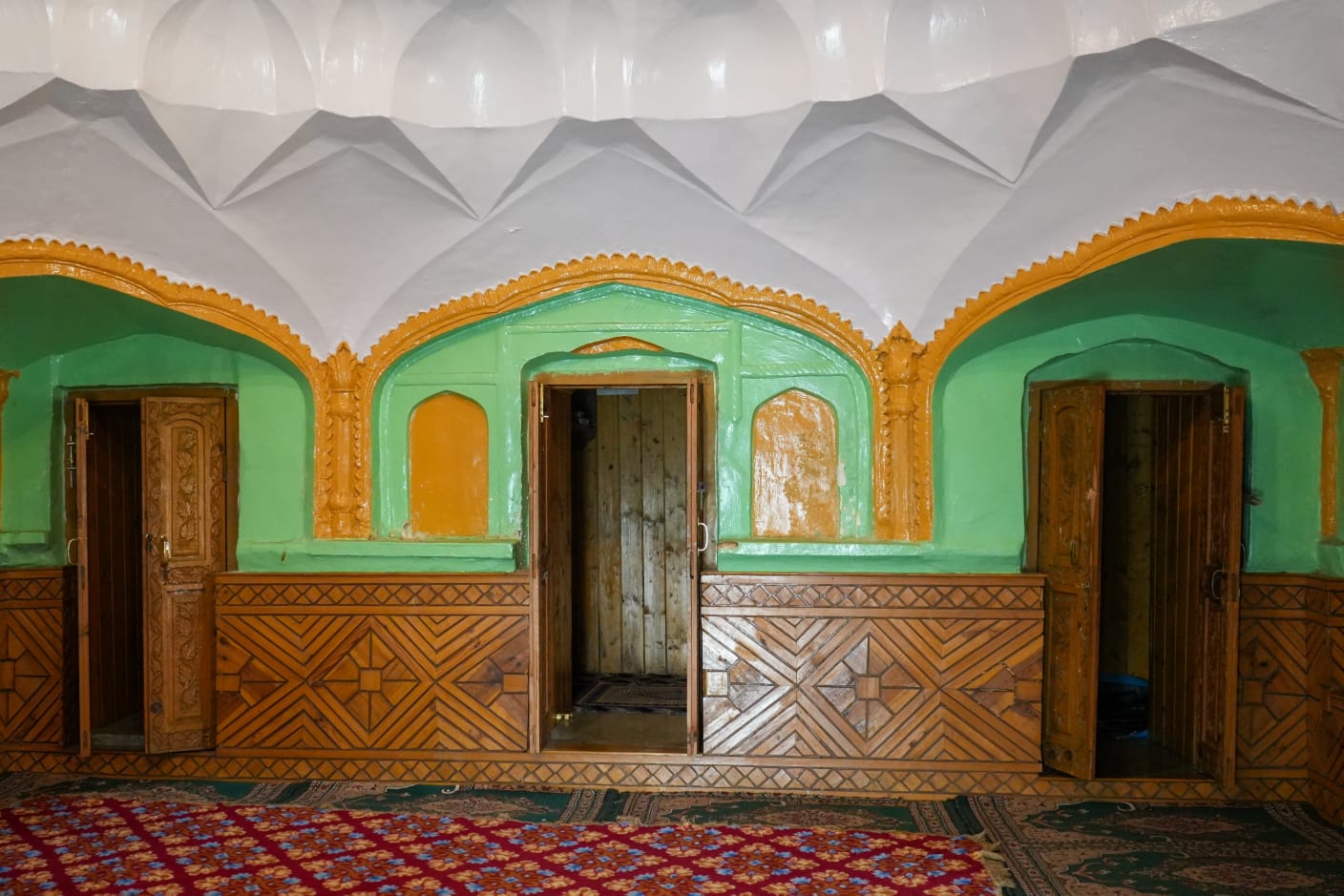Baba Dawoodi Khaki, a devoted disciple of the revered Sheikh Hamza Makhdoomi (RA), has lived through miraculous experiences, resonating with profound stories of faith and spirituality. Throughout his journey, he surpasses the boundaries of sectarian divisions, dispelling the shadows of materialism that hinder the collective pursuit of higher truths.
Childhood to Chief Justice
According to historical records, Sheikh Baba Dawood Khaki was born in the year 1500 A.D., corresponding to 908 Hijri in the Islamic Calendar. He hailed from the “Ganai” family, a community in the valley associated with meat trading, situated in the Kalashpora area of Kashmir's capital, Srinagar.
His given name was Mullah Daulat Khaki, yet his parents affectionately called him "Baba." "Dawood" served as his title (Laqab), and "Khaki" was his pen name.
He received his early education at a local calligraphy school. Later, under the guidance of esteemed religious figures, he learned the fundamental texts of Islam, studying Fiqh (the understanding of Quran and hadiths) and Tafseer (the interpretation of the Quran).
Recognizing his capabilities, Sultan Ali Shah, the ruler of the valley, appointed him as a tutor for his son. In a short span, he earned the position of the administrator of education, and ultimately, ascended to the esteemed role of Chief Justice in the King's court.
Meeting Sheikh Hamza Makhdoomi (R.A)
Dawood Khaki (R.A), adapted to a lavish lifestyle, gained popularity among the masses. Horses and government boats were his preferred modes of transportation.
Yet, after encountering Sheikh Hamza Makhdoomi (R.A), he relinquished his opulent life. Driven by a desire for self-mortification, Dawood sought the company of Sheikh Hamza Makhdoomi (R.A). In response, Sheikh Hamza Makhdoomi (R.A) directed him to serve his disciples and to organize water for their ablutions.
 Inside Dawood Khaki's (RA) burial place with Master Sheikh Hamza Makhdoomi (RA). Photo By Zubair Hameed
Inside Dawood Khaki's (RA) burial place with Master Sheikh Hamza Makhdoomi (RA). Photo By Zubair Hameed
Koh’i Maraan Incident
One day, Sheikh Hamza Mahhdoomi (R.A) was meditating atop Koh’i Maraan, an overseeing hill in Srinagar, the capital of Kashmir, also known as Hari Parbat. Dawood Khali (R.A) patiently waited to serve his master.
During this time, Dawood Khaki (R.A) began to reflect on his past fame, wealth, and luxury. As these thoughts circled in his mind, Sheikh Hamza (R.A) called him and said, 'Oh Dawood, please arrange a lump of earth (used as a purifying agent during the unavailability of water) from Koh’i Maraan for my ablution.
When Khaki went there and looked around, he saw that the entire Koh’i Maraan had turned into gold. Shocked, he went to Sheikh Makhdoomi (RA) and narrated what he had witnessed.
Sheikh Makhdoomi (RA) asked, 'Can we use gold for purification?' Dawood Khaki (R.A), being a scholar, replied, 'No.' Sheikh Hamza Makhdoomi (R.A) smiled and said, 'So why do you desire for those things which cannot even replace a lump of earth?' Dawood Khaki (R.A) received the message well and dismantled the foundation of his materialistic ideas.
Seeing Holy Prophet PBUH and his 4 companions
During the 1550s, the Kashmir valley was witnessing a dilemma of sectarian divide between 'Shias and Sunnis.'
With depravity at its peak, Dawood Khaki (RA), a religious scholar and a student of Sheikh Hamza Makhdoomi (RA), was also nervous and concerned about the question of 'Who should have been the first Khalifa, caliphate?'
With high hopes, he visited the Mosque of Koh’i Maraan and entered the Rock-tightened Prayer Chamber, seeking help from the Almighty regarding the controversy.
According to his book, 'Dastoor-al-Salikeen,' after continuously praying for three days, Dawood Khaki (RA) heard a massive cry. Following the sound, he peeped through a narrow hole in the chamber's door and saw Prophet Muhammad PBUH on a horse with a white turban. Subsequently, the door of the Mosque opened, and he witnessed the entrance of Abu Bakar (RA), the first Caliph of Islam, Umar ibni Alkhatab (RA), the second Caliph, Uthman ibni Zinoorain (RA), the third Caliph, and Ali ibni Abi Talib (RA), the fourth Caliph.
 Compact prayer rooms in Koh'i Maraan Mosque. Photo By Zubair Hameed
Compact prayer rooms in Koh'i Maraan Mosque. Photo By Zubair Hameed
He further narrates that all four Caliphs left the Mosque in the same sequence as they entered, with Ali ibni Abi Talib (RA) being the last to depart. However, Dawood Khaki (RA) adds that before the departure of Ali ibni Abi Talib (RA), Ali (RA) instructed Dawood to firmly believe in the sequence of the four companions in his heart.
He died in south Kashmir's Anantanag while on his return and was buried in Srinagar beside his mentor Sheikh Hamza Makhdoomi (R.A) on Koh’i Maraan, Srinagar.
These stories were compiled by Dawood Khaki (RA) and published in the books 'Virdul-Murideen' and 'Dastoor-ul-Salikeen,' written in the Persian language, which also has an Urdu translation known as 'Qasida Jalalia.